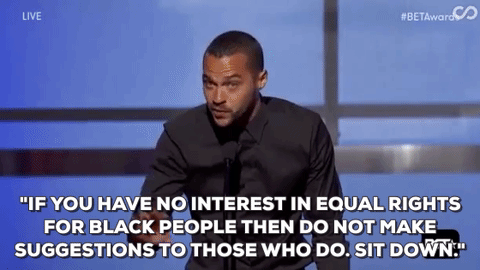
Feb
A Response to, “Paula Scher on Why and When it’s Worth it to Work for Free”
[responsivevoice_button voice=”UK English Female” buttontext=”Listen to Post”]
Recently, AIGA Eye on Design posted an essay from Pentagram partner (and one of my personal heroes) Paula Scher on why it’s sometimes okay to work for free.
With all due respect, Paula Scher needs to have a seat and listen.
1. This is not me talking. This is my ancestors talking.
Now, before you roll your eyes and say, “Oh here comes another slave narrative,” let me put it to you like this. When I go to bed at night, or am in deep meditation or prayer, the voices of my mother, late father, grandmothers, grandfathers tell me,
Baby, you have gifts in you that you cannot give away anymore. We have worked too hard for you to be exploited.
2. Talking about money for creatives has historically meant some of us haven’t earned “enough” to talk about money.
Even moreso if you are a creative of color. Talking about money isn’t about moralizing motives, justifying prosperity gospel, or whether we have enough to take care of ourselves. This is about pay equity, which leads to economic justice. This is about fair wages. This is about profit sharing. This is about respect. I made the B*tch Better Have My Money Heat Index because the incredible design work being done by all women is being devalued. Be a part of changing that, instead of glibly justifying free work.
I know some people in our industry fashion themselves too polite or savvy to sufficiently publicly drag a design legend like Paula Scher.
I know some people in our industry fashion themselves too polite or savvy to sufficiently publicly drag a design legend like Paula Scher.
3. I can afford to do what I want because I made someone else pay me for years.
I once left a position because I was burned-out in a toxic environment. The good news is that I set aside an emergency fund. I had more time to focus on myself, and projects that I wanted to pursue. The lesson? Don’t leave a job because we didn’t get paid. Walk away from a job if we are unhappy and still get paid.
4. I can do what I want on my own time. Monetizing a client’s time values their time.
I make projects and write blog post after blog post on my own time. I don’t need clients to produce creative content. But when I charge a client for my services, I’m also saying, I respect you enough to put the same love and attention on your project as I would my own. This is why it’s so important to read books like Shel Perkins’ Talent Is Not Enough: Business Secrets for Designers. Knowing your billable hours (meaning what percentage of your work day is actually committed to work) establishes trust and respect with your clients, which brings me to…
5. When we establish pay, we’re not looking for power. We’re looking for trust and respect.
Reading the essay, it seems Scher’s brand of a power dynamic is some Svengali-esque fantasy in which we think we’re manipulating our substandard situation by manipulating our client (it’s, “the servant is the true master” ethos). That’s not only delusional, it’s disrespectful to the client. By thinking we can just leave the project or take endless time just because we’re working for free, we come off like the feckless, temperamental (and ultimately dispensable) graphic designers we’re portrayed in the media. When we monetize our work, we are now committed to a series of deadlines, a budget, and other people’s interests besides our own. And when we deliver on a product that meet all criteria, clients respect us, trust us, retain us, and pay us.
6. Scher’s argument ignores multiple economic realities.
Income inequality, gender and race pay gaps, intergenerational wealth, and the high cost of college tied to student loan debt. Scher graduated from Tyler School of Art in 1970, when average tuition for a four-year private institution in the late Sixties was $1,000 per year, including room and board (about $7,500 now, when adjusted for inflation). In fact, when I transferred from Clark Atlanta University in 2000, I also got accepted to Tyler. But I couldn’t accept their financial aid package because their tuition was too high. In the 2000/2001 school year tuition at Tyler was (minus grants and loans) $13,000 (compared to Howard’s then-tuition of $9,800).
Thinking every creative can make their way from nothing while ignoring the larger economic realities is frankly embarrassingly obtuse, and further hobbles the design industry’s ability to be adept at the economics of monetized creativity.
7. You know what else is power? Speaking truth, even it makes others uncomfortable.
I know some people in our industry fashion themselves too polite or savvy to sufficiently publicly drag a design legend like Paula Scher. History tells us, however, when we speak truth to power in constructive ways, it leaves a lasting impact. I respect Paula Scher tremendously, but she is dead-wrong. I don’t have to wait for someone else to give me permission to say that.
For those unaware, images used in this essay came from Jesse L. Williams acceptance speech at the 2016 BET Awards, in which he was awarded Humanitarian of the Year.



